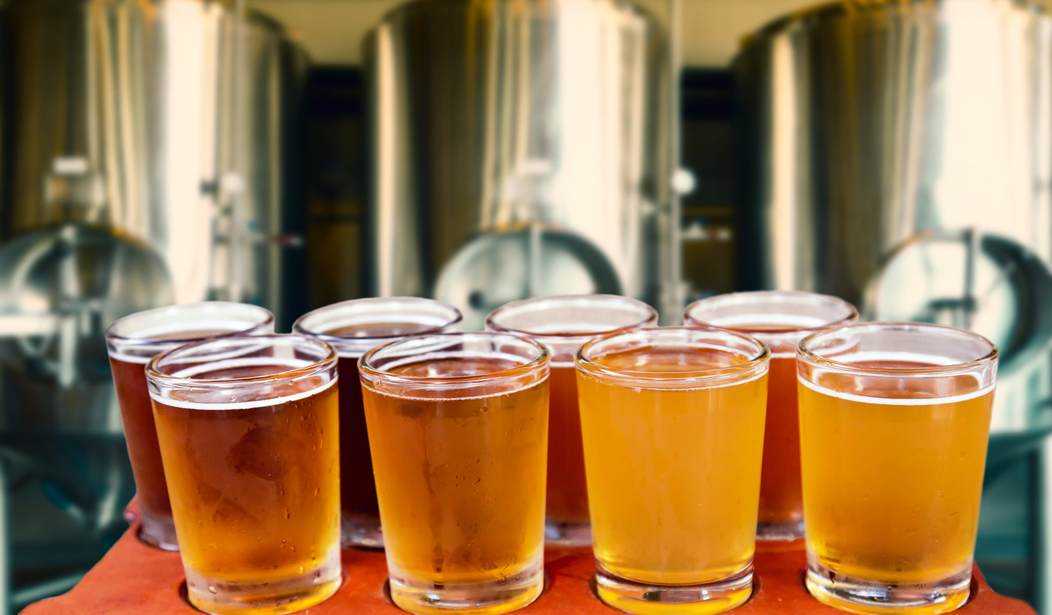Let’s all agree that microbreweries in general are pretty cool. They typically have an independent vibe, the beer is locally produced and tastes better than mass-produced beer.
In the past decade or so, there has been a revival of sorts in American beer culture. The concept of a “microbrewery” has become popular in towns all across the United States. A microbrewery is one that has a limited production scale. They may be so limited that the only location to buy their beer is at their brewery.
Microbreweries embody everything you would expect from American entrepreneurs. They are small and independent, typically led by one person with a passion. They are growing so fast that even the big players, like Budweiser, feel threatened. At one point, Budweiser (which is owned by a Belgian multinational, by the way) ran an ad claiming to be the original microbrewery. That ad was quickly pulled due to it’s rather unbelievable claim. And let’s not forget that Budweiser change the name of its flagship beer to “America.” Really, they are that desperate.
So, we should all be excited about microbreweries, right? They are locally owned, locally produced, and typically do not use corn syrup in their recipes (again, I am looking at you, Budweiser). But there is one problem, and it has to do with the ingredients.
To understand the problem with American microbrewery ingredients, we have to go back in time a bit—to the year 1516 to be exact. That is when Bavaria (Bayern, for our Deutsche speakers) instituted the Reinheitsgebot, better know to English speakers as the “German Beer Purity Law.” The law (which is still used today, although applied only to lagers) stated that beer could only be produced with three ingredients: barley, hops, and water. Yeast is technically a fourth ingredient allowed (which was explicitly added later), but at the time, the cause of fermentation was not understood, plus yeast exists naturally in the air.
So, Germany has had a few hundred years to perfect beer using four, and only four, ingredients: barley, hops, water, and yeast. And they got really good at it. In fact, one of the largest celebrations of beer is located in Munich, Bavaria (modern day Germany). Oktoberfest has some of the most wonderful beers imaginable. Well-balanced and delicious, all beers at Oktoberfest still conform to the Purity Law.
American microbreweries, on the other hand, use all kinds of other ingredients, from spices to fruits to coffee and even different grains, such as wheat. Honestly, I don’t think there is much of an issue there. I applaud creativity and experimentation. No, the issue isn’t with the “other” ingredients. It all has to do with the hops.

Brewers at Dogfish Head announcing Hoo Lawd. Image courtesy of Dogfish Head.
American microbreweries have a bad habit of hopping the heck of their beer. In fact, it has almost become a game for breweries to see who can create the hoppiest beer. Hops are what give beer most of its bitterness. In the beer tasting world there is a measurement for bitterness called International Bittering Units (IBU) scale. For example, late last year Dogfish Head Brewery claimed to have made the “hoppiest” beer ever. Hoo Lawd came in at 658 IBUs. To put that in perspective, Coors reaches about a 9 on the IBU scale and Guinness is about 60. The problem is compounded by the fact that a great classic American hop, Cascade, is one of the most bitter hops commonly available.
Why? No seriously, I am asking: Why is hoppiness THE standard for microbreweries? If you want to make real beer, you still have three other ingredients to worry about. The barley, which is where you get the malt from in beer, can have a rich, diverse flavor depending on what type of barley you use and how you mix different types of malt together. Many of the traditional German beers have well- balanced malt, which brings out a lot of flavor. Also, not all yeast is the same. Different yeasts produce different flavors of alcohol. Bad yeast alone can ruin even the best of beers. Or even the water. For hundreds of years, the source of water was considered critical in making alcohol. If you don’t believe it, do some research on bourbon (which is actually commonly known as whiskey).
The point is, there is more to beer than hops. Don’t get me wrong, the right hop can make a huge difference. The Saaz hop from the Czech Republic is probably the best-smelling plant in the world, in my opinion. But it isn’t as insanely bitter as Cascade. Microbreweries need to stop trying to out hop each other and focus on making good, well-balanced beers. As consumers, let’s ask for more than hops. I don’t even care if the beer violates the German Purity Law. Let’s get some diversity in our beer! In the meantime, however, I will still take up any offer to spend a relaxing evening in an American microbrewery.








Join the conversation as a VIP Member